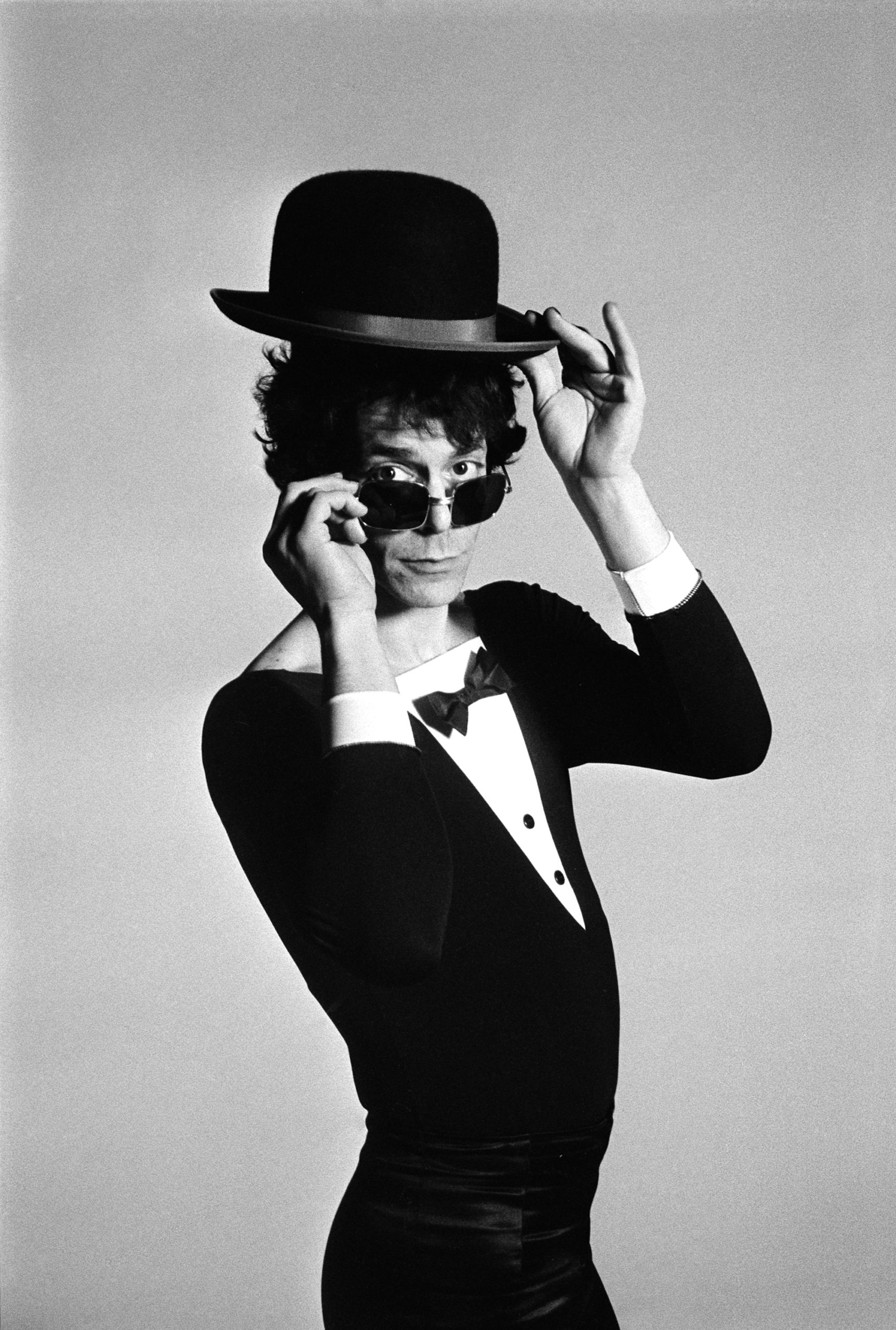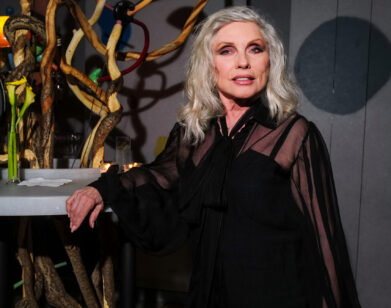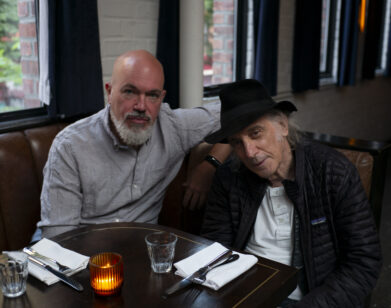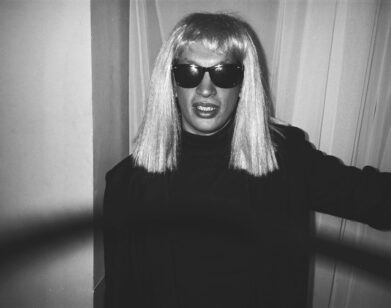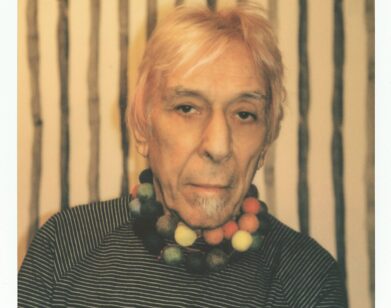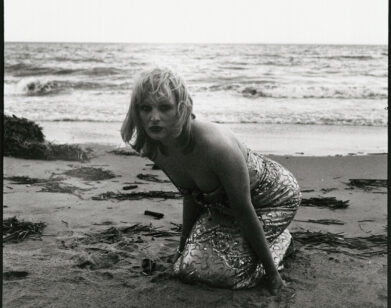let's rock
From Bowie to Blondie, Mick Rock Reflects on a Career of Shooting Stars
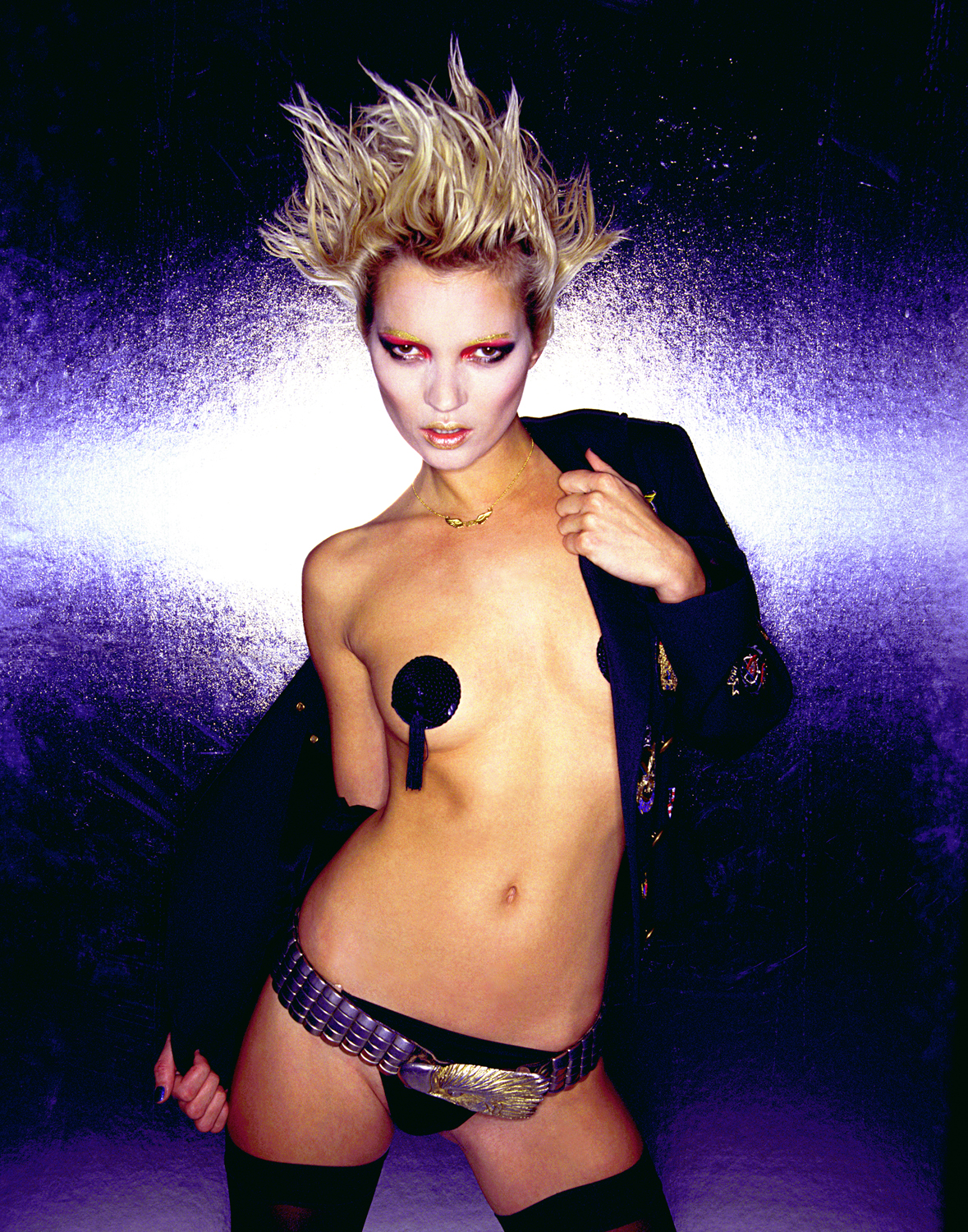
© Mick Rock 2021 / Midaro / West-Contemporary-Editions.com
Mick Rock isn’t sure how he feels about being known as ‘The Man Who Shot The Seventies.’ “I’m still shooting today,” he points out, but he’s able to tell me all about how he’s earned himself the title. After walking away with a degree in modern languages and literature from Cambridge, he tried his hand at writing before ultimately picking up his camera to make some extra money. Before long, he found himself backstage at a David Bowie gig at Birmingham Town Hall in 1972 to take some pictures and interview Ziggy Stardust himself.
The pair had an instant connection, and Rock soon found himself traveling the world with Bowie as his personal photographer on the Ziggy Stardust tour. The singer was the ideal subject for Rock, appealing directly to what inspired him most in those days. “I was always interested in altered states,” he says. “It was the LSD that really caused all the problems, but still,” he pauses, “…it could have been worse!’
From there his career in music photography snowballed, and he spent the next five decades capturing images of the music industry’s most legendary performers. He’s responsible for many of the images ingrained in our minds when we think of stars like Debbie Harry, Lou Reed, Joan Jett, Iggy Pop, and Madonna, and of course, the quintessential David Bowie photos we know and love. Having made a career preserving the image of a star at the most pivotal moments, in recent years he’s pointed his lens in the direction of modern musical legends. Examples include shooting an unpolished Lady Gaga, teetering on the brink of fame in early 2008, and, most recently, capturing Miley Cyrus for the cover of her Joan Jett-inspired Plastic Hearts album, an important step on the singer’s winding path to the Rock and Roll Hall of Fame.
In Rock’s opinion, the relationship between music and photography is simple. “I think a great photo is like a hit song—it keeps you coming back for another nibble.” By that logic, his images have been slowly feeding us for over fifty years now, satiating our curiosity before drawing us back for more.
Ahead of “MIDARO,” his upcoming collaboration with the celebrated urban aesthetic artist Fin DAC, who has immortalized some of Rock’s most famous images into a series of limited edition prints, we caught up with ‘The Man Who Shot The Seventies’—and beyond—to reflect on some classic shots from his archive and their iconic subjects.
———
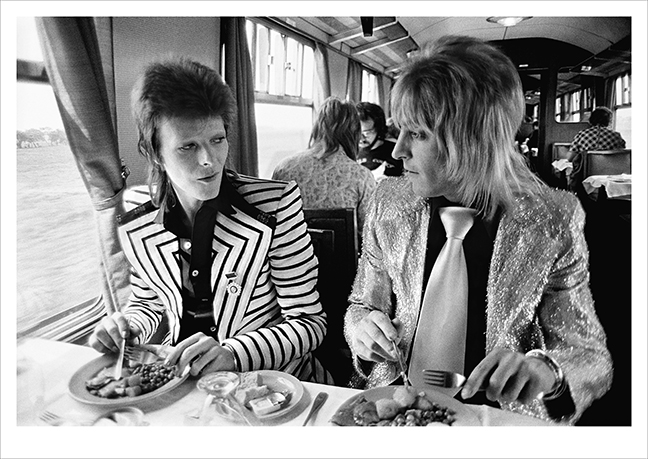
© Mick Rock 2021 / Midaro / West-Contemporary-Editions.com
David Bowie & Mick Ronson
(1973)
“Oh, look at this! On this day we were going to Scotland. David wouldn’t fly so the management got us a train and they rented one of the compartments. I have a great solo shot of David having his lunch too, probably taken seconds after this, which I’ve never published. There’s something about this photo… of course the ridiculous outfits, but also the mundanity of the food. I mean, it was British Rail lunch, how exotic was it going to be? I think the thing that really makes it is the look going between them. It looks like they’ve got the fucking rock and roll tiger by the balls, and they know it.
David was very imaginative and very quick with ideas. He would move fast. It wouldn’t matter if it was someone else’s idea because he would make it happen. He looks like such a specimen there. I saw him as a kind of ringmaster in a circus. Him and Mick, I got lucky having those two as subjects. I took a lot of pictures of the Stones and The Beatles but this was a moment that couldn’t be equalled, ever.”
———
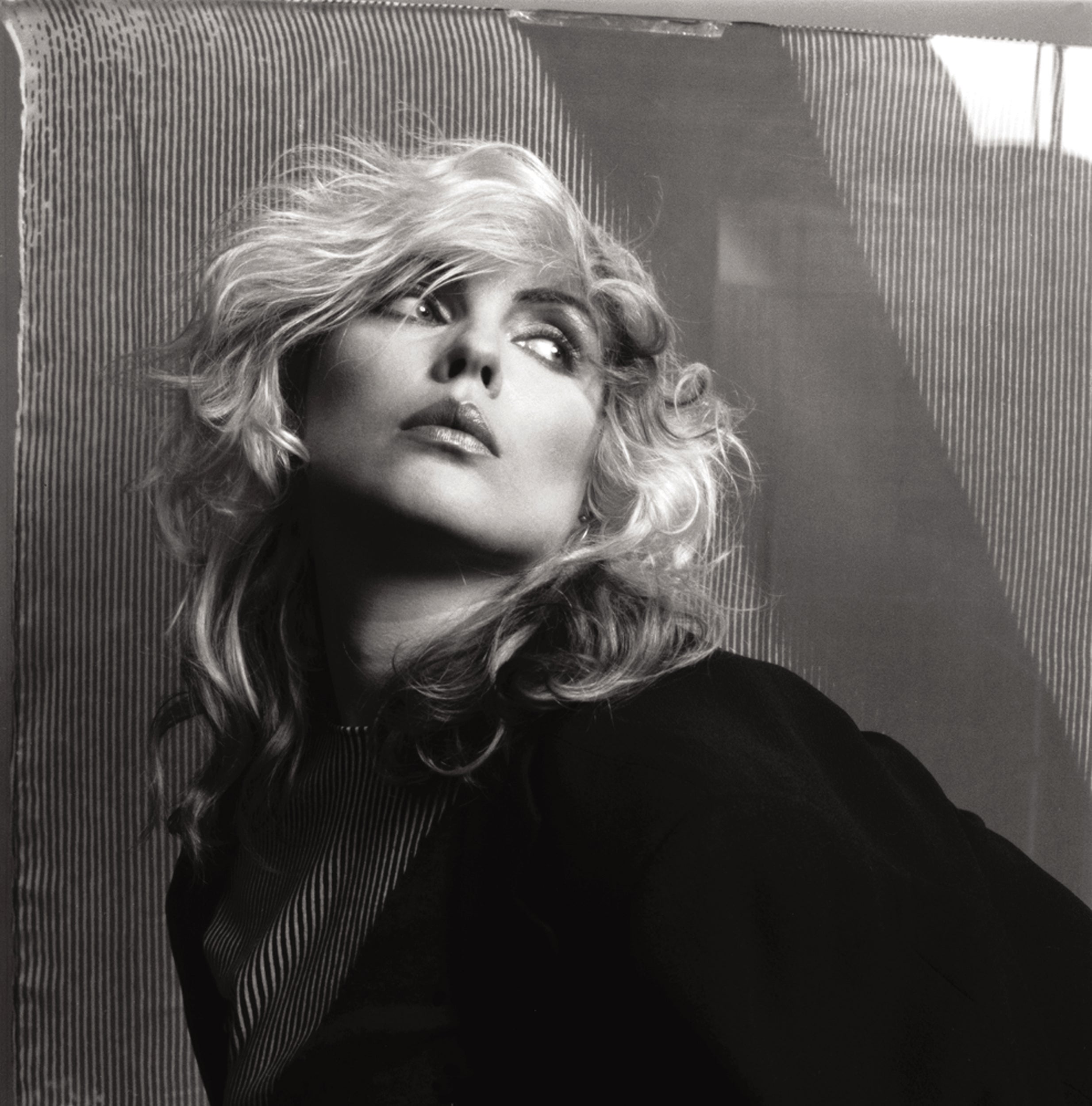
© Mick Rock 2021 / Midaro / West-Contemporary-Editions.com
Debbie Harry
Penthouse Magazine (1978)
“This shot of Debbie hasn’t been out there before. It’s a good one. Another shot from this session was very famous as the Picture This album cover. Of course, she’s an amazing subject. She wasn’t that caught up in everything and she really knew how to be photographed.
I shot this in 1978, over forty years ago, but she still looks great today. ‘Heart of Glass’ had just become a hit in Europe around this time so Blondie had really arrived at the table, although I’m sure they didn’t realize it. We shot the pictures for Penthouse Magazine. I remember they sat on the photos for months, but they eventually ended up on the cover. It’s a cool picture. I like it and she likes it.”
———
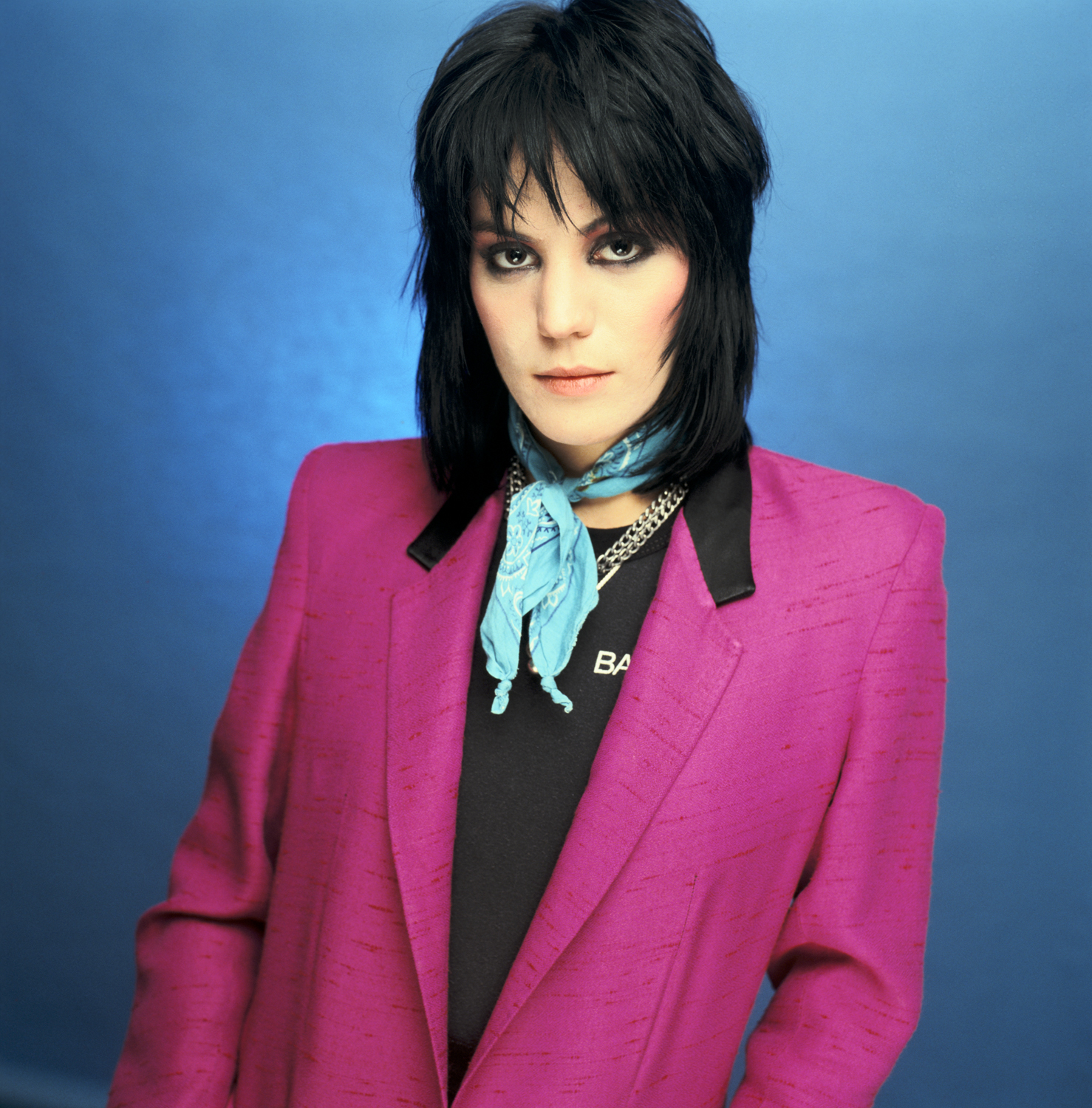
© Mick Rock 2021 / Midaro / West-Contemporary-Editions.com
Joan Jett
I Love Rock ‘N’ Roll album shoot (1982)
“I’d met Joanie once before because I knew her lawyer. She seemed like a natural fit for me. I’d started to seek her out at this stage. Then I got a call from a guy at her record label saying they’d tried three sessions with other photographers but she and her manager didn’t like the shots and they’d nearly ran out of money. They could only shoot after midnight but that wasn’t an issue for me. I was up late anyway in those days. I had a place off Madison Avenue, in a commercial building, so they came to me to shoot there.
She was a natural. You can see when that jacket popped up, she’s sort of like Elvis Presley with her dark looks. I look at that picture and it’s like it wants to hang out with you. A lot of people, when they think of Joanie, this is the shot they think of. It was one of the last of her outfits in this shoot, probably taken around 3am. She was cool. She would wait to be instructed. Obviously she had already been in The Runaways, it’s not like she wasn’t used to cameras, [although] apparently she was a bit shy in the early days. She’s fantastic. She’s just a nice person. I was invited to see her documentary recently, which was cool for me because I got to see her perform again. She’s a great talent.”
———
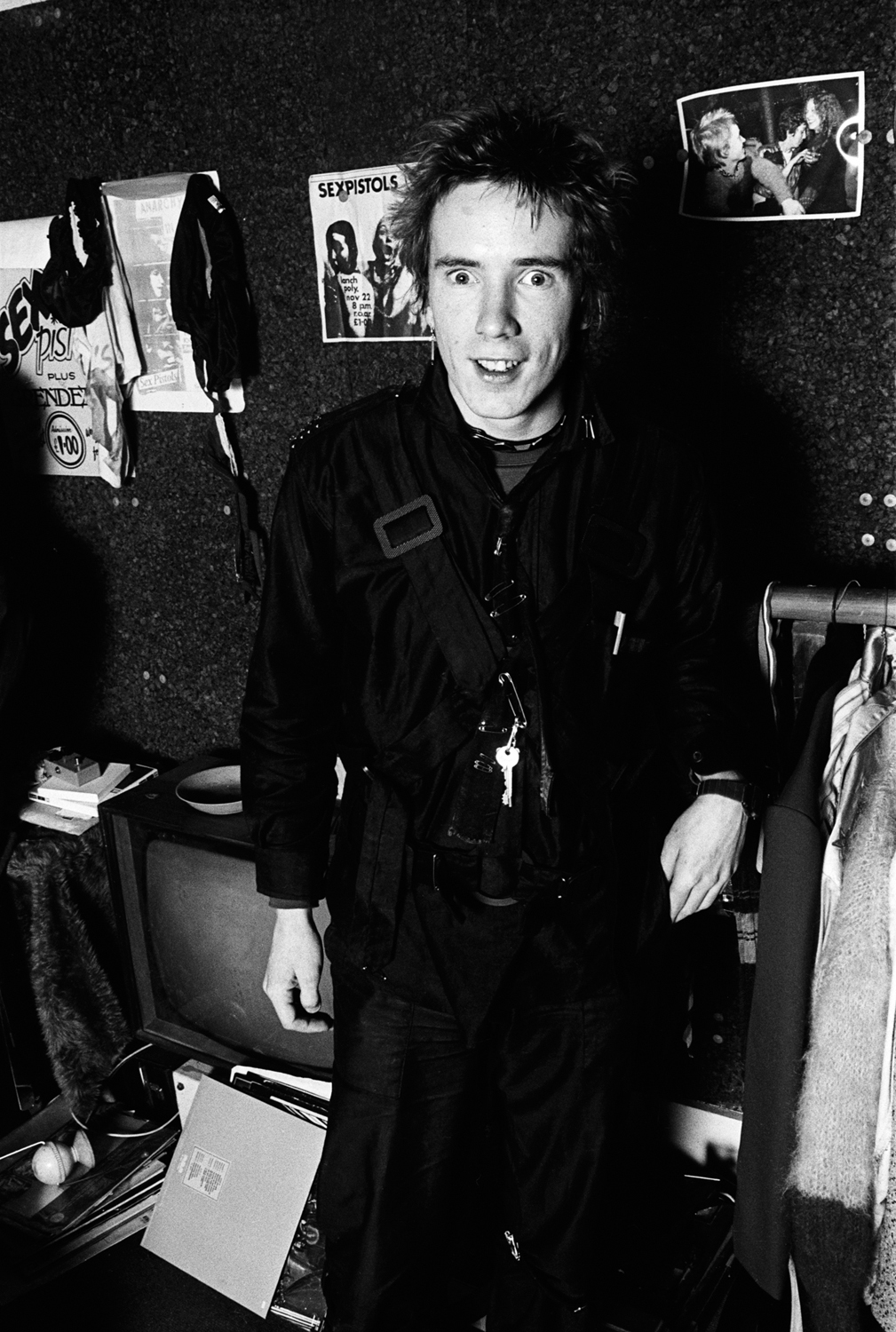
© Mick Rock 2021 / Midaro / West-Contemporary-Editions.com
Johnny Rotten
(1976)
“That was taken where [the Sex Pistols] were rehearsing, on Denmark Street in London. It was late 1976 and they were just starting to make a racket. Talk about an agent provocateur! Sid Vicious was one too, in a way, but Johnny was the attitude behind the Sex Pistols. I don’t know if I liked him or not, I didn’t really have a view on him. Malcolm McLaren was involved back then and he was encouraging some natural tendencies that were in Johnny, like his big inferiority complex. He had to insult everybody, but that’s alright because it worked. It doesn’t matter where the impulse comes from. The other guys weren’t mean to anybody. Johnny was the provocateur—he was the one that stirred the mischief. I think he did the band because he didn’t have much else to do. I don’t think he had an enormous amount of alternatives in life.”
———
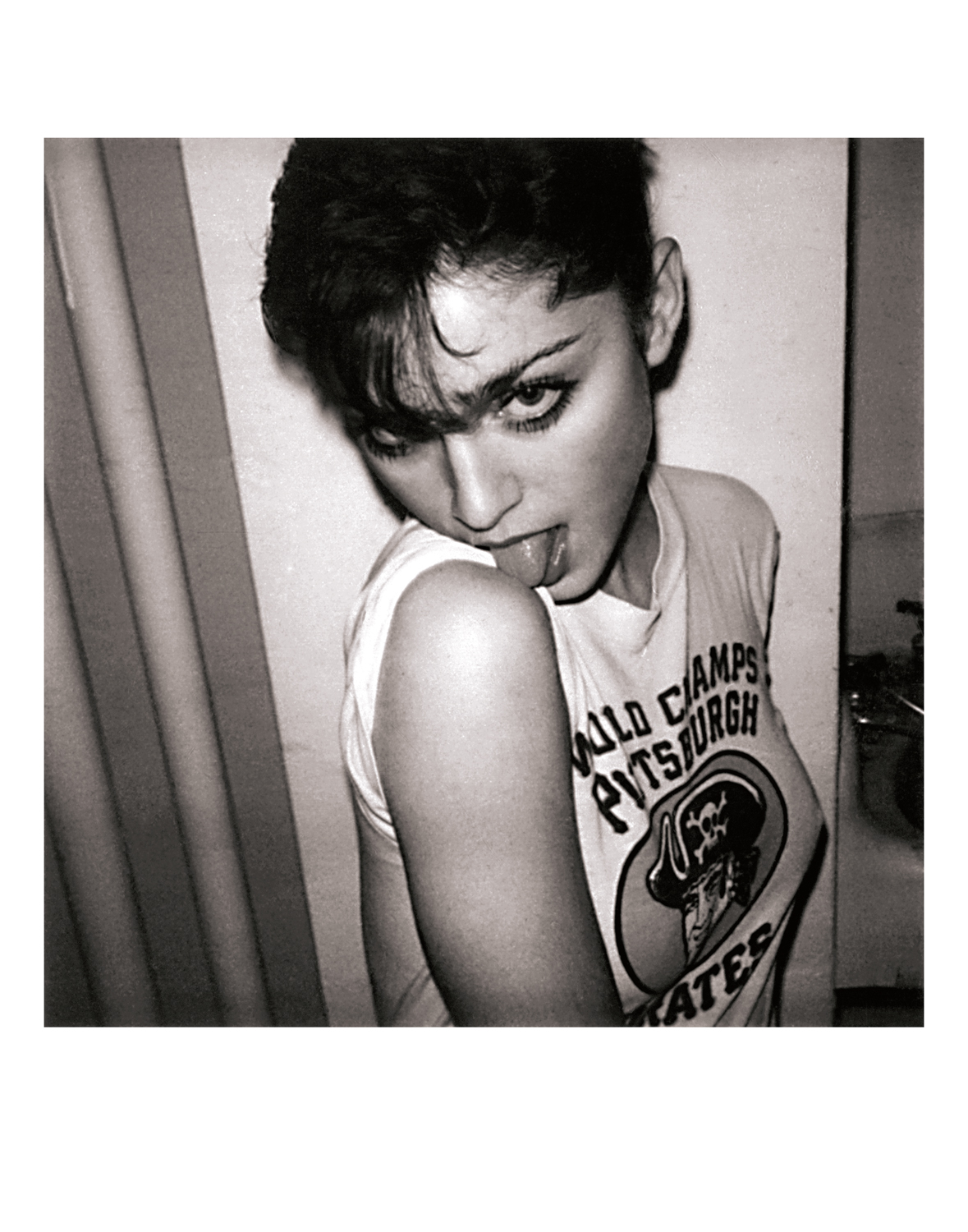
© Mick Rock 2021 / Midaro / West-Contemporary-Editions.com
Madonna
(1980)
“This was a curious one. There was a guy called Bleecker Bob who had a store in the West Village called ‘Bleeker Bob’s Golden Oldies.’ In my early years in New York, he would sometimes bring aspiring singers to my studio on Madison Ave. and 32nd. I would take snaps of all of them and [Madonna] came up one summer evening. She seemed very ambitious. I recall her being friendly but mostly curious, just having a look around. I don’t recall her being obnoxious in any way, she was just young. She was curious about Lou Reed and Bowie. Everyone wanted to know about David.
This is 1980, so she’d only just about got here. I don’t know if she was even doing music at this time because she came to New York to dance. The shot didn’t take very long, it’s not constructed. I wasn’t telling her, ‘Baby, stick your tongue out’. She did all that. She’d do whatever it takes to get a bit of attention.
For years I never thought much of this picture. It’s not one of these apocalyptic shots of her, like I shot of some other people. On the other hand, I see why people like it because she’s so raw. Not in an unpleasant way, there’s nothing wrong with it. I’m very happy to have got this Polaroid now that she’s a big spirit in the sky. I mean, does she rank up there with the big ones? In a way, she does. Not so much for the music but for the way she put herself over. This was at a time in the eighties when it was so unbelievably sexist in music, so you’ve got to respect her. It’s not easy. I don’t think she ever had a drug problem. She was fueled by ambition, god bless her. There’s about another five of these polaroids and I can’t find them. I’ve got to find the rest of them because this is the stuff that people love.”
———

© Mick Rock 2021 / Midaro / West-Contemporary-Editions.com
Kate Moss
V Magazine (2002)
“Another agent provocateur! She’s calmed down a bit though, which happens to a lot of talented people. She’s pretty down to earth, one of the lads in her own way. There’s loads of beautiful women in the world but it’s having that other ‘thing’ that’s what counts in the end. That was the belt Lou Reed was wearing for the Rock And Roll Animal cover, which he had given to me at some point. I basically styled this, with second hand t-shirts and that jacket, and the girl who technically styled it brought the knickers and those boobie traps.
It’s a pretty cool picture. It has a rock and roll element to it. It was shot here in New York. I think she came a few hours late, but that was part of my expectation of her. She really responds [to you], you don’t have to do much—just get her moving around, she’ll give you good pictures. What sets her apart from other models is that she’s shorter, but it didn’t really matter because she was so photogenic. She enjoyed that kind of attention—you’ve got to enjoy it. She came to my last Blondie book launch and I got a bunch of pictures of her and Debbie. She seems to have segued into being a businesswoman now.”
———
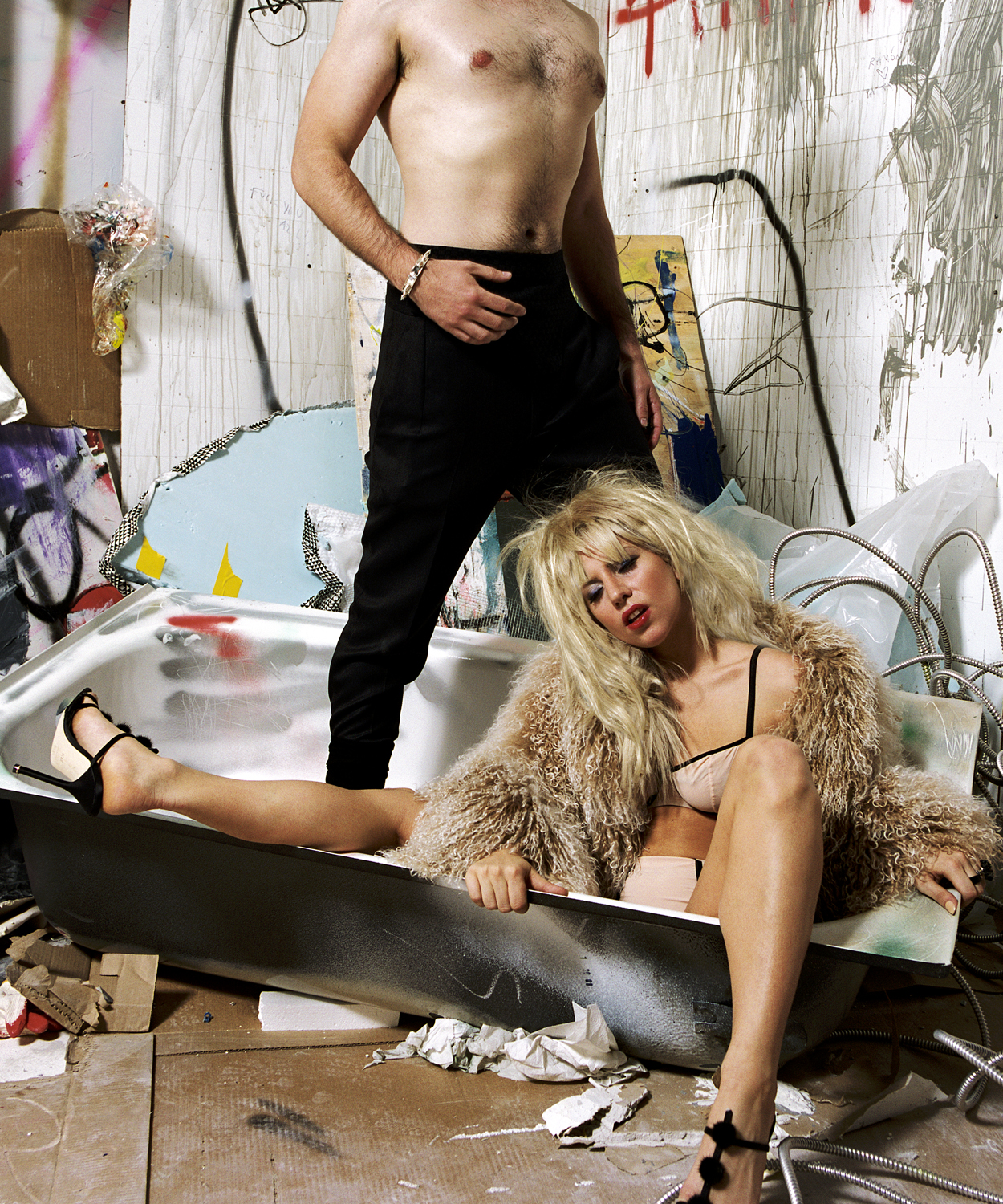
© Mick Rock 2021 / Midaro / West-Contemporary-Editions.com
Lady Gaga with Space Cowboy
City Magazine (2008)
“This was over a decade ago now. It was something for City Magazine, and it wasn’t just her—it was with a bunch of other entertainers and creatives. She had mostly been writing songs for other people; that’s what got her known. I remember she told me, ‘I’m going to be a big star in a few months,’ and bingo—she was! She was a very nice lady. I asked her where she got the name Lady Gaga and she told me how it was inspired by ‘Radio Gaga’ by Queen. One thing she’s got, to start with, is a great voice. When you’ve got that, everything else is just building and your confidence can grow. She’s become more svelte and styled since this moment in time, of course, but mostly she’s done it all herself.”
———
Lou Reed
(1975)
“The Velvet Underground were definitely provocative, but Lou wasn’t in those days. They never made any money. It didn’t work, but then it did for Lou on his own. Lou was my friend. He was, in a way, quite an introvert and very hard to understand, but I had a friendship with him. I suppose it started with the Transformers cover. You can see from this photo how he had a sense of humor. You can see he’s being very playful. We shot these photos just because we wanted to, then we made a bit of money [from them] because they ended up using them for the Coney Island Baby album, but they weren’t intended for that.
To me, he was a poet. I met him through Bowie. Lou was coming over and we had already talked about him, David had met him before. He was definitely easy to photograph too. With me and Lou, the proof was in the pudding, in the photos. He told his manager, ‘Mick sees me the way I see myself.’”
———
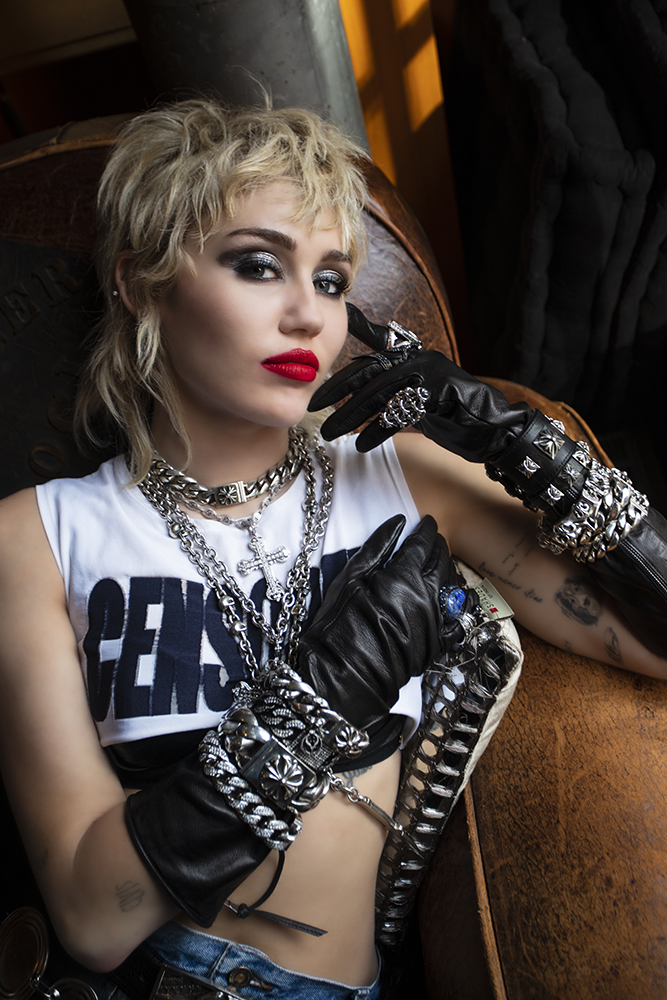
© Mick Rock 2021 / Midaro / West-Contemporary-Editions.com
Miley Cyrus
Plastic Hearts album shoot (2020)
“It’s funny, when I shot Miley she had just done a track with Joan and a cover of Blondie, so it was all in the air. She’s the New Age, you see. They absorb. She’s been around the business a long time and she’s a pro, but she’s also a lot more of an artist than I realized.
I’ve known one of her producers, Andrew Watt, since he was quite young and he’d been talking to me about shooting her for over a year. I never thought about it much once COVID hit because she lives in L.A. Then he called me up one day and said ‘We’re in town. We want you to shoot the album cover.’ I had this amazing place which a friend of mine owns, it was perfect for this. So we got organized and started shooting around 1pm. She’s very easy to photograph. She doesn’t have to think about it much at all. It may have taken in total about four hours.
What I responded to with her was her imagery. She doesn’t have to stick her tongue out. There’s other things she can do, though if she wants to do that, that’s fine too. She almost owns that. I mean, there’s loads of pictures of male rock stars doing that, but she’s somehow claimed it. Of course she did all that stuff, and she does it very well, but I wanted to do something a little quieter, like this one. She’s very glamly punk in this picture, which of course is my specialty, and she’s definitely an agent provocateur, but she’s got the talent. I see David in her somewhere. She has that duality, like David. He was really such a boy, there’s no doubt about it, particularly if you knew him as well as I did. But he could be girlish. And she’s really a girl, no doubt about that, but she has that tomboyish thing, which is totally fabulous. She’s become very distinctive, and, remember, she was also distinctive in an earlier incarnation. And now that’s been swept under the cover, not because she’s sorry she’d done it, but because she didn’t want the mass brain to be consumed by that image.”
———
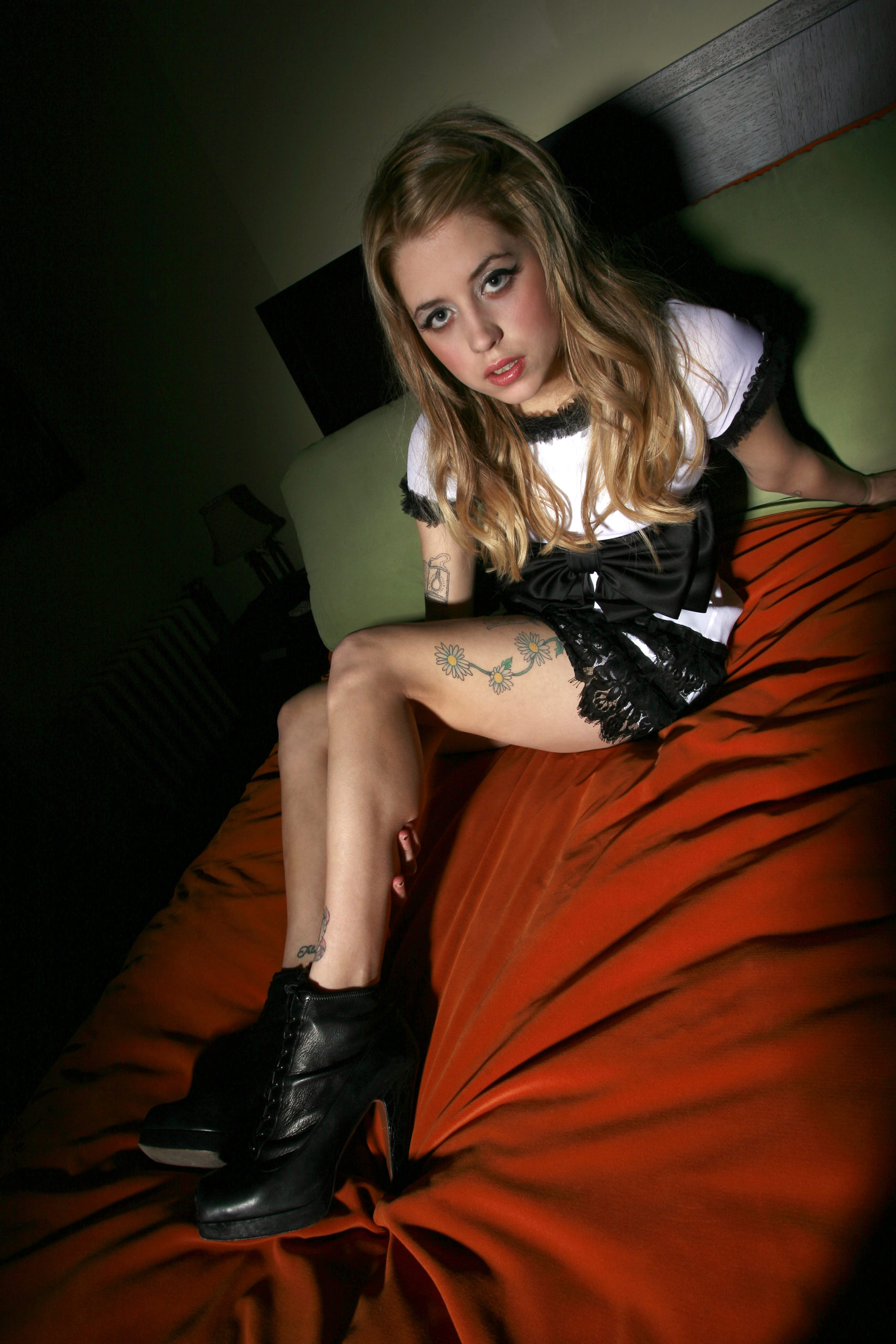
© Mick Rock 2021 / Midaro / West-Contemporary-Editions.com
Peaches Geldof
Alice + Olivia (2011)
“I’ve always liked this picture. She died not long after, sadly. I can’t remember what this was for. I didn’t really think about it much, but I thought ‘Why not?’ She was like a little rock and roll girl but she had a certain innocence. I remember having tea with her, chatting to her and… what she told me I’m not going to repeat, it’s none of my business. She seemed intelligent. I think her parents were both very bright. I only know Bob Geldof a little, I have some pictures of him but I don’t really know him. But I liked her.
I don’t think she’d done that much work in front of the camera. She’d obviously done some, but she didn’t seem that secure in her own skin. There was an innocence and sweetness to her. She looks a bit like a little creature, doesn’t she? She was living in New York for a few months at the time. She just wanted to be a New York party girl. She was so young and obviously very vulnerable. That’s what makes it sad. She wasn’t very old. Stupid bullshit with young boyfriends.”
———
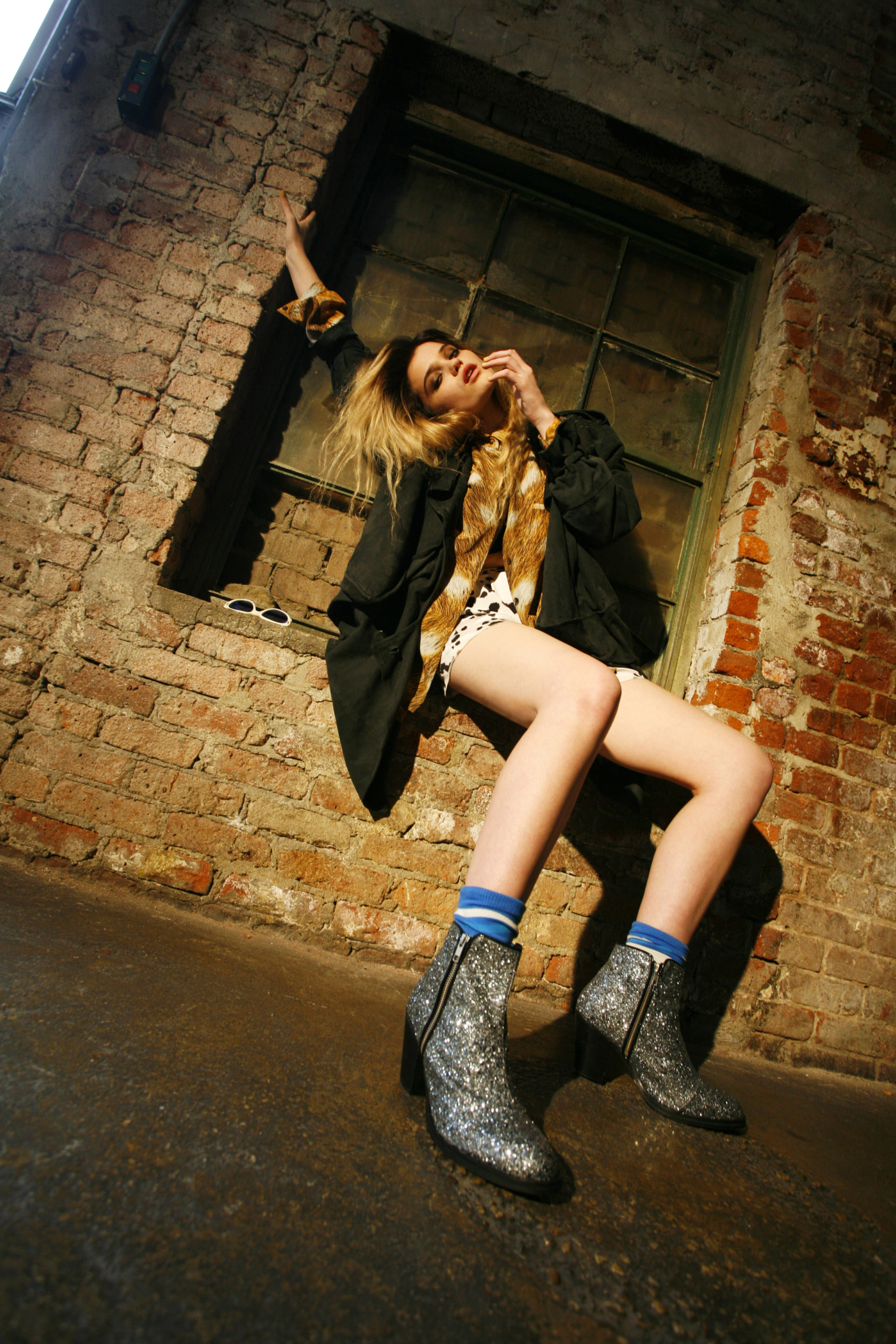
© Mick Rock 2021 / Midaro / West-Contemporary-Editions.com
Sky Ferreira
ContentMode Magazine (2011)
“I shot with her a couple of times. She wasn’t difficult to photograph. I think we shot this out in Brooklyn. By the time I worked with her she had a good bit of experience. She had obviously learned a lot, but there was still an innocence to her. She looks like a little creature in this. She is a sweet little thing and she’s got such a good name. She’s got an ‘It’ factor. I was always good at bringing that out of people. It’s something in the eyes and also in the breathing. I think she was only in her teens here so there’s plenty of time for a comeback. There’s no doubt she’s very talented, but she’s also, from my perspective, so divinely rock ‘n’ roll fabulous.”
———
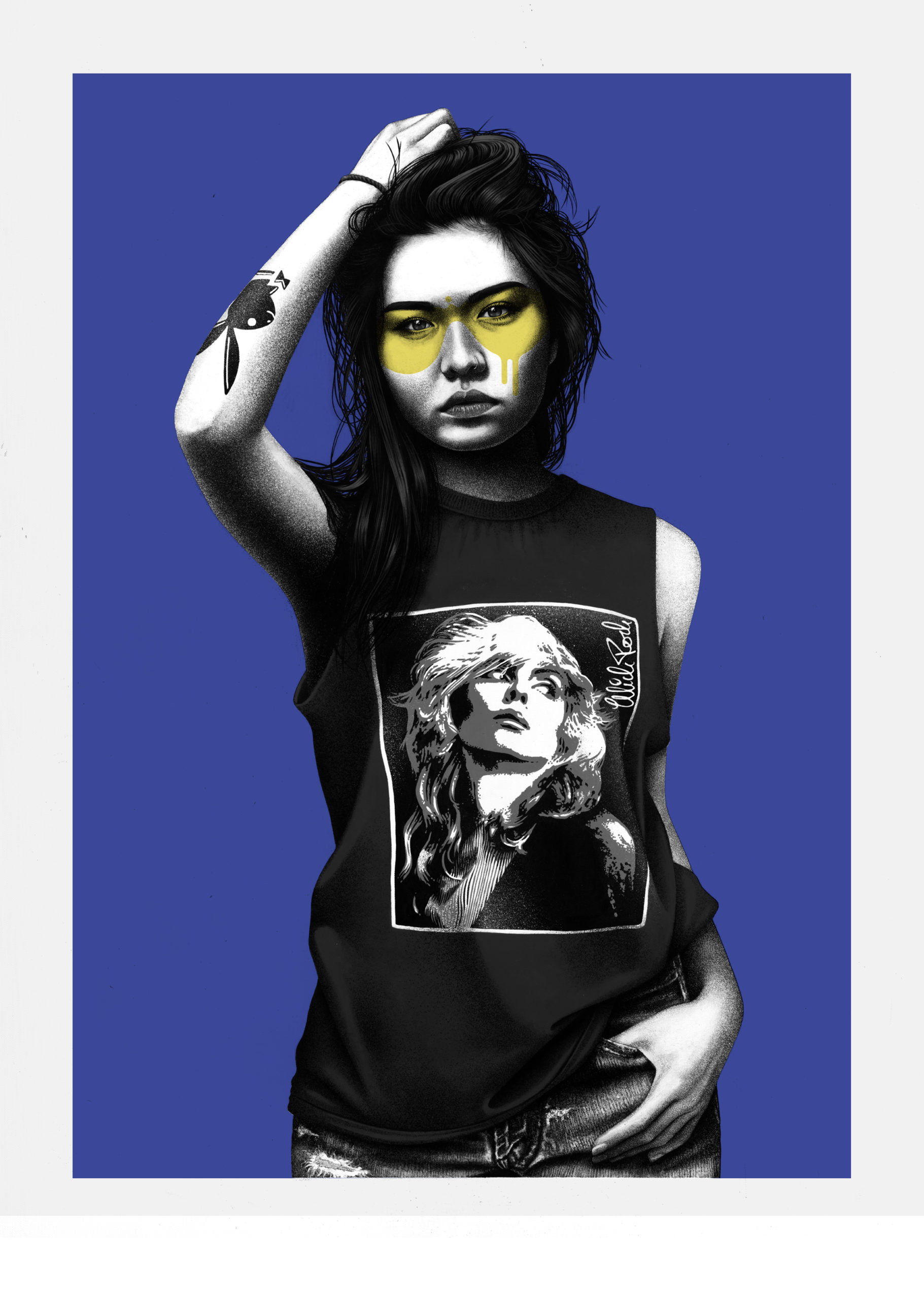
© Fin DAC / Mick Rock 2021 / MIDARO / WEST-CONTEMPORARY-EDITIONS.COM
Mick Rock is marking his 51st year in the industry with a new project entitled “MIDARO,” a collaboration with the celebrated urban aesthetic artist Fin DAC who has incorporated Rock’s classic images of Bowie, Reed, Harry and Iggy Pop into a series of limited edition prints. He has also curated a selection of his personal favorite images of the subjects, including the images of Debbie Harry and Lou Reed seen here, which will be made available in 3-5 limited edition sizes
per print, in editions of 51.

